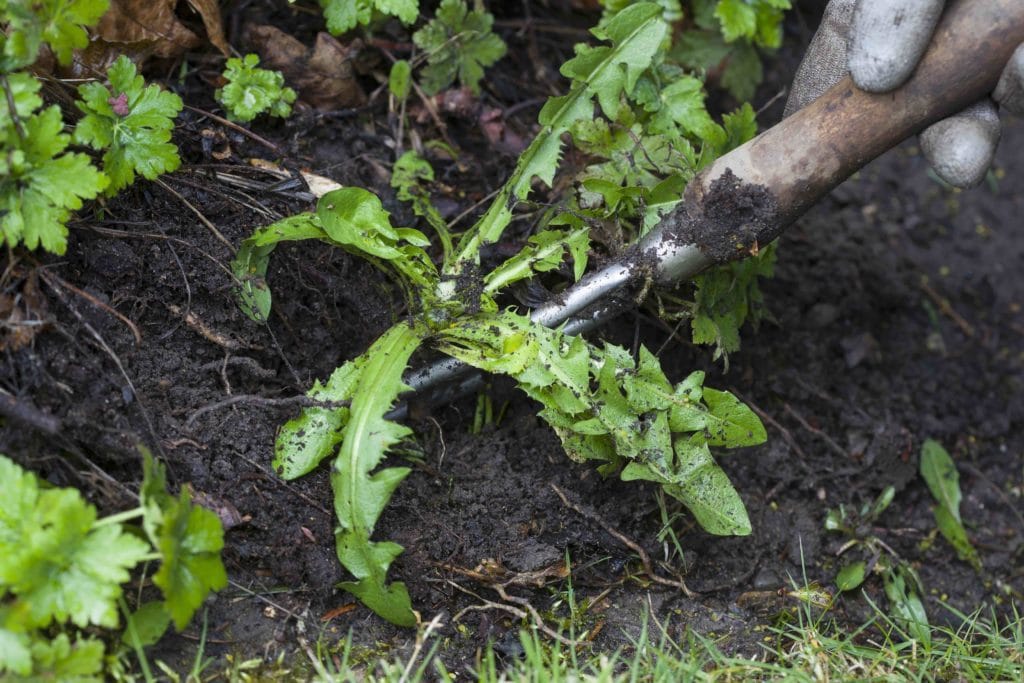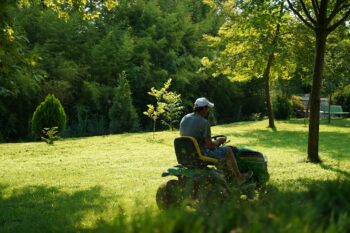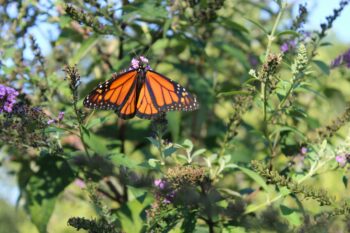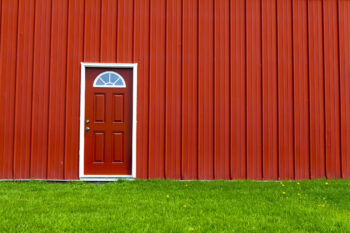Weeds are a headache to landscape owners. Your beautiful and colorful garden can turn into a messy space. The expensive flowers, effort, and time will be useless in a snap. Take the time to address weeds quickly, to prevent a more expensive and time consuming issue.
Removing the broadleaf weeds can be easy, however new landscape owners find it difficult at first. Even some seasoned gardeners do it the wrong way. Read below to learn how to remove them properly.
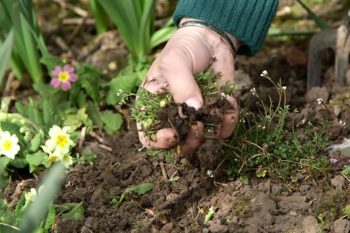
Hand- Pull Weeds
One of the most effective ways to get rid of broadleaf weeds is to hand-pull weeds out. This method is best suited for small infestations as it can be time-consuming. Make sure to grab the weed by the base and pull it out completely, including the root.
University of Florida (2021) hand pulling is also one of the most environmentally friendly and cost efficient weed control methods. Make sure you remove the weed’s entire root system when pulling them out of the ground; you can use a small-bladed knife to loosen the roots from the ground.
Identify Weeds Correctly Before Treatment
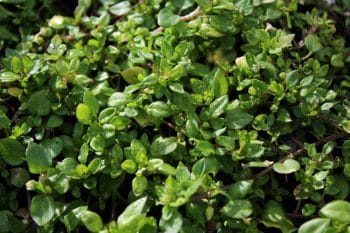
One of the biggest mistakes made when treating weeds in your lawn is not identifying them correctly before treatment. Different weeds require different treatments, and mistaking one for another leads to ineffective and wasted efforts. Learn how to properly identify common weeds of Texas.
Before you even think about treating weeds, you need to identify if they are grassy or broadleaf weeds. Grassy weeds, such as crabgrass and dallisgrass, are grass-like in appearance, with long, skinny leaves and a central stem.
Broadleaf weeds, such as dandelions and clover, have leaves that are wider and more distinct. Once you identify the type of weed, you can then choose the most effective treatment.
This could involve using a specific herbicide or simply changing your lawn care practices to discourage the growth of specific weeds. Always double-check the type of weed before treatment to ensure you achieve the best possible results.
Use the Right Herbicide
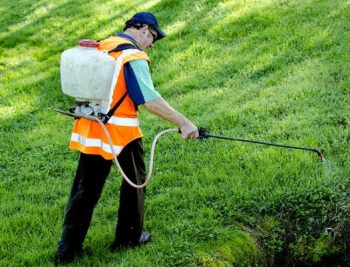
Some say a broadleaf-free garden only requires extensive pruning. While it can be effective, the problem may recur. Also, manual trimming can be a waste of time and a big hassle for those with less time to devote to lawn maintenance.
The right herbicide can be the solution to achieving a weed-free garden. The best times to apply these herbicides are during the mid-spring or mid-autumn. Check out our “Weed and Feed Schedule” to get a better idea of when to apply herbicides and fertilizers.
Duble (n.d.) Regular mowing and proper fertilization during late winter and spring improves the appearance of turf areas and reduces the competition weeds provide, but does not eliminate them from the turf. Chemical control with nonselective herbicides in dormant bermudagrass or with selective herbicides in others will remove weeds from the turfgrass.
Employ the Solution Properly
Herbicides are strong enough to kill your favorite plants. When using a mixed solution, you have to be careful. A simple mistake can ruin a beautiful backyard.
Aside from spreading the mixture as a liquid, you can sprinkle it directly on the grass, too. Its best to apply after a rainfall, as heavy rains can wash the herbicide away, possibly polluting water systems.
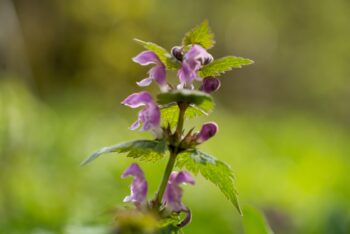
Don’t Spread the Solution too Close to Plants
Herbicides are used to get rid of broadleaf weeds, but gardeners can accidentally spread it too close to shrubs and other trees. Don’t rush this process. Take your time to achieve a worthy result.
Choose a day when you’ll have plenty of time to focus on this process. Your efforts will be in vain if the result is destroying other plants, flowers, and shrubs you’ve worked hard to maintain.
Follow Basic Lawn Care
Anyone can be a gardener and earn their green thumb. Lawn maintenance does not need to be complicated and expensive. Simple care is more than enough to keep your turf and garden in good condition. Say goodbye to costly solutions and consider whether or not you need a specialist.
If you have the right tools, it can also be an advantage. The equipment in your storage room can help provide the maintenance that your garden requires. Whether you lack the experience or tools, hiring a professional for lawn fertilization and weed control is always a useful alternative.
The quicker you address the weeds at hand, the less overwhelming the issue can become. Prevention is key and will save time for you in the future, and provide the beautiful lush lawn and gardens you desire.
References
Duble, R. (n.d.). Broadleaf weed control. Texas Cooperative Extension. https://hortipm.tamu.edu/PLANTanswers/turf/publications/weed2.html
University of Florida. (2021, June 8). Weeding. University of Florida. https://gardeningsolutions.ifas.ufl.edu/care/weeds-and-invasive-plants/weeding.html

